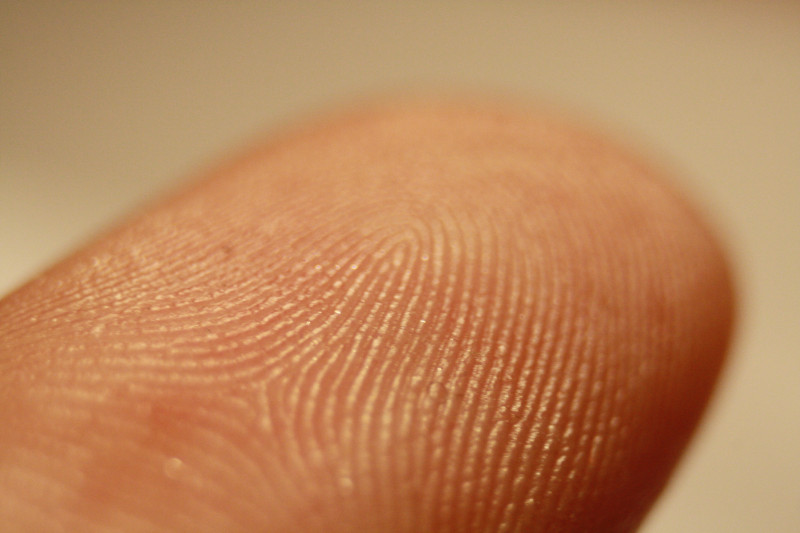
Ridges on a human finger.
Fingerprint forensics is the collection, storage and analysis of the impressions left by the ridges of human fingers.
Fingerprints are left on surfaces you touch by the moisture and grease on your fingers, and can be collected from these surfaces. They can also be collected directly from your fingers using ink or other substances (fingers are first dipped in ink, then put on paper, leaving impressions on the paper), or using electronic fingerprint scanners.
Because fingerprints are nearly unique and durable over the life of an individual, two fingerprints can be compared to determine if they belong to the same individual.
Fingerprints left on surfaces degrade over time and under certain conditions (e.g., in contact with acetone), and must contain a sufficient amount of detail to be useful in a comparison. On some surfaces, such as metal, the reaction between the finger grease and the metal can etch a print into the surface itself, leaving the fingerprint identifiable even after the surface is wiped with an acetone-soaked cloth.
In many countries, the State has fingerprint databases containing the fingerprints of many individuals, often obtained during arrests.
See the fingerprints topic.
Used in tactics: Incrimination
Mitigations
| Name | Description |
|---|---|
| Careful action planning | An adversary can use fingerprint forensics to collect and analyze fingerprints at an action site. To mitigate this, you can carefully plan the action so that any tools you plan to use during the action are free of fingerprints in case you lose them or have to discard them in a location where they can be recovered by an adversary. |
| Gloves | You can wear gloves to avoid leaving fingerprints on surfaces you touch. |

